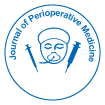
Journal of Perioperative Medicine
Open Access
ISSN: 2684-1290

ISSN: 2684-1290
Perspective - (2025)Volume 8, Issue 1
Postoperative pain management remains a critical component of perioperative care, directly influencing patient recovery, satisfaction and the risk of chronic pain development. Traditionally, opioids have served as the cornerstone of postoperative analgesia due to their potent efficacy. However, the growing awareness of opioid-related adverse effects, including respiratory depression, nausea, constipation, opioid-induced hyperalgesia and the alarming rise in opioid dependency and misuse, has prompted clinicians and researchers to seek safer, more effective pain control strategies. This landscape has fostered the emergence and adoption of Multi Modal Analgesia (MMA) a strategy that combines multiple analgesic agents and techniques targeting different pain pathways to achieve superior pain relief while minimizing opioid consumption.
In high-income countries, where healthcare infrastructure and education support advanced perioperative practices, multimodal analgesia has been widely integrated into enhanced recovery protocols and perioperative guidelines. MMA typically incorporates a blend of non-opioid pharmacologic agents such as acetaminophen, Nonsteroidal Anti-Inflammatory Drugs (NSAIDs), gabapentinoids, regional anaesthesia techniques (nerve blocks, epidurals) and adjunctive therapies like ketamine or dexmedetomidine. By simultaneously modulating peripheral and central pain mechanisms, this approach produces synergistic analgesia, reducing reliance on any single drug class particularly opioids.
The rationale behind MMA is grounded in the complexity of nociceptive processing. Pain signals involve peripheral nociceptors, spinal cord transmission and higher cortical interpretation, with multiple neurotransmitter systems at play. Opioids primarily act on central opioid receptors but do not address all aspects of pain signalling, especially inflammatory or neuropathic components. Therefore, combining agents that target prostaglandin synthesis (NSAIDs), neuronal excitability (gabapentinoids) and regional nerve conduction can provide comprehensive analgesia that attenuates the intensity and duration of postoperative pain.
Clinical evidence supporting MMA is strong. Meta-analyses from North American and European centres have demonstrated that multimodal regimens significantly reduce opioid consumption by 30% to 50% in the first 48 hours after surgery. Patients receiving MMA also experience fewer opioid-related side effects, leading to improved mobilization, decreased nausea and vomiting and shorter hospital stays. These outcomes not only enhance patient experience but also reduce healthcare costs associated with managing opioid complications and prolonged admissions.
Regional anaesthesia represents a cornerstone of multimodal analgesia. Techniques such as peripheral nerve blocks or neuraxial anaesthesia provide site-specific analgesia without systemic opioid exposure. For instance, femoral nerve blocks in knee surgery or transverse abdominis plane (TAP) blocks in abdominal surgery have been shown to provide effective pain relief and reduce opioid needs. Furthermore, continuous catheter techniques allow prolonged analgesia into the postoperative period, promoting earlier rehabilitation and discharge.
Non-opioid systemic agents also play pivotal roles. Acetaminophen, a mainstay in MMA, provides analgesia with minimal side effects and opioid-sparing properties. NSAIDs reduce inflammation and peripheral sensitization but must be used cautiously in patients with renal impairment or bleeding risks. Gabapentinoids such as gabapentin or pregabalin address neuropathic components of postoperative pain and have demonstrated opioid-sparing effects, although their use requires monitoring for sedation and dizziness.
Adjuncts like ketamine and dexmedetomidine are gaining prominence in multimodal protocols, especially for patients at high risk of opioid tolerance or chronic pain. Low-dose ketamine provides NMDA receptor antagonism, limiting central sensitization, while dexmedetomidine offers sedation and analgesia through alpha-2 adrenergic pathways, reducing opioid demand.
Implementing MMA requires interdisciplinary collaboration among anaesthesiologists, surgeons, nurses and pharmacists. Tailoring regimens based on surgery type, patient comorbidities and risk factors is essential. Preoperative education and expectation setting regarding pain management strategies can improve adherence and outcomes.
Despite the benefits, challenges remain in optimizing MMA use. Variability in protocols, concerns about drug interactions, contraindications and the need for adequate provider training limit widespread adoption. Additionally, while MMA reduces opioid consumption, it does not eliminate the need for opioids entirely in many cases, emphasizing the importance of balanced pain control.
Multimodal analgesia represents a paradigm shift in postoperative pain management, balancing effective analgesia with opioid stewardship. By leveraging the synergistic effects of multiple analgesic agents and techniques, MMA reduces opioid requirements, mitigates adverse effects, and promotes faster recovery. In high-income healthcare settings, integrating MMA into standard perioperative care protocols is a critical step toward addressing the opioid epidemic while enhancing patient outcomes. Future efforts should focus on standardizing multimodal analgesic protocols, expanding provider education and personalizing regimens to maximize efficacy and safety. As research continues to evolve, multimodal analgesia will undoubtedly remain central to the goal of achieving optimal, patient-centred postoperative pain control with minimal reliance on opioids.
Citation: Bennett OM (2025). Multimodal Analgesia in Reducing Opioid Use Postoperatively. J Perioper Med. 8:266.
Received: 05-Feb-2025, Manuscript No. JPME-25-37976; Editor assigned: 07-Feb-2025, Pre QC No. JPME-25-37976 (PQ); Reviewed: 22-Feb-2025, QC No. JPME-25-37976; Revised: 02-Mar-2025, Manuscript No. JPME-25-37976 (R); Published: 09-Mar-2025 , DOI: 10.35248/2684-1290.25.8.266
Copyright: © 2025 Bennett OM. This is an open-access article distributed under the terms of the Creative Commons Attribution License, which permits unrestricted use, distribution, and reproduction in any medium, provided the original author and source are credited.